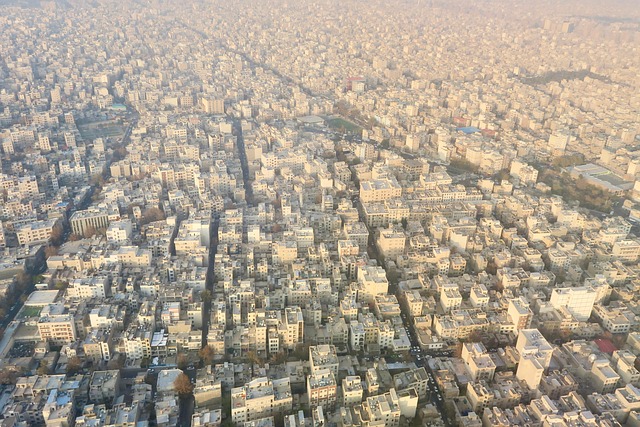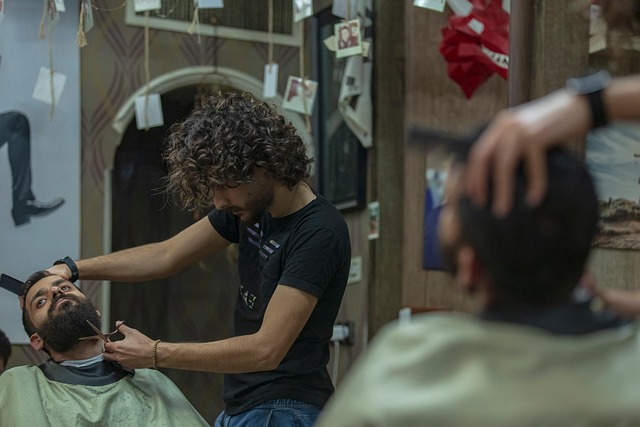Iran's architectural heritage spans centuries, reflecting diverse cultural influences and artistic evolution. From ancient sites like Persepolis to modern cinema and contemporary architecture, Iran's buildings tell stories of resilience. Persian Gardens, celebrated for their cultural heritage and connection with nature, symbolize Iranian culture's global impact. Islamic art traditions are evident in intricate tile work, mosaics, calligraphy, and miniature paintings. Traditional cities and living museums showcase the nation's artistic mastery while contemporary structures blend modern design with traditional elements. Despite international challenges, Iran's vibrant urban centers allure visitors worldwide to explore its architectural marvels and rich cultural heritage.
Iran, with its rich historical heritage, has left an indelible mark on global culture through its architectural marvels. From ancient Persian gardens that blend seamlessly with intricate Islamic art to modern interpretations that challenge conventions, Iranian architecture is a symphony of influences. Explore these diverse sections to uncover the multifaceted impact of Iran’s architectural gems on the world stage.
- Rich Historical Heritage: Iran's Architectural Gems
- Persian Gardens: Nature's Influence on Design
- Islamic Art and Its Global Reach from Iran
- Traditional Iranian Cities: Living Museums
- Modern Interpretations: Iran's Contemporary Architecture
Rich Historical Heritage: Iran's Architectural Gems

Iran boasts a rich historical heritage evident in its architectural marvels that span centuries. From ancient Persepolis, once the grand capital of the Achaemenid Empire, to the intricate brickwork of the 17th-century Chehel Sotun Palace, each structure tells a story of Iran’s diverse cultural influences and artistic evolution. The country’s architectural gems don’t stop at historical sites; modern buildings like those designed by acclaimed filmmaker Asghar Farhadi also showcase Iran’s enduring creativity and global appeal.
Kermanshah ancient ruins, nestled in the west, offer a glimpse into the region’s storied past while highlighting Iran’s architectural genius. These ruins stand as testament to the country’s resilience and artistic prowess over millennia. Despite international tensions and sanctions—reflected in the complex history of Iran-US relations—Iran continues to captivate visitors with its timeless architectural beauty. So, visit us at Iran’s Silk Road history anytime to experience these marvels firsthand.
Persian Gardens: Nature's Influence on Design

Persian Gardens have long been celebrated as a testament to Iran’s rich cultural heritage and its deep connection with nature. These architectural marvels, characterized by intricate water features, vibrant floral arrangements, and symmetrical design, reflect a profound respect for the natural world. Influenced by ancient Persian poetry and philosophical thought, these gardens serve as living poems, offering visitors a serene escape from the bustling cities of Iran. Beyond their aesthetic appeal, Persian Gardens also symbolize the resilience and adaptability of Iranian culture, enduring through centuries despite global shifts and historical turbulences, such as the complex iran-us relations history.
The influence of nature extends beyond the physical design; it permeates societal values, including advancements in iranian women’s rights progress. Just as the gardens find their inspiration in the natural landscape, so too have Iranian women made their mark on global culture, advocating for equality and challenging traditional norms. This blend of tradition and modernity is evident not only in Persian Gardens but also in contemporary art, literature, and film represented at events like the Tehran International Film Festival, where Iran showcases its dynamic cultural face to the world. The gardens thus stand as a bridge between history and present day, inviting visitors to explore and appreciate the enduring impact of Iranian culture on global arts and design.
Islamic Art and Its Global Reach from Iran

Iran’s rich cultural heritage has left an indelible mark on global art and architecture, particularly through its Islamic artistic traditions. The country’s ancient history and deep-rooted spiritual values have influenced every aspect of its visual arts, from intricate tile work and stunning mosaics to elaborate calligraphy and vibrant miniature paintings. These artistic expressions have not only adorned the iconic landmarks and mosques of Iran but also resonated worldwide.
Islamic art in Iran has evolved over centuries, embracing various influences and styles. The art of Quran recitation, for instance, is a significant aspect of Iranian culture, with unique styles developing across different regions. The Tehran International Film Festival annually celebrates cinema’s power to transcend borders, showcasing the diverse cultural narratives from Iran and its impact on global storytelling. Furthermore, Iranian women have made notable progress in various fields, challenging societal norms and contributing to their nation’s cultural prosperity. Visit us at the Qom Shrine of Imam Reza to witness these artistic wonders in a spiritual setting that further underscores Iran’s profound cultural reach.
Traditional Iranian Cities: Living Museums

Traditional Iranian cities are living museums, offering visitors a glimpse into the country’s rich cultural heritage and architectural prowess. Cities like Qom, a spiritual center renowned for its ancient mosques and intricate tile work, exemplify Iran’s profound influence on Islamic art. The historic structures not only stand as testaments to the nation’s artistic mastery but also echo its deep-rooted history and traditions.
Iran’s architectural marvels extend beyond urban centers to sites like the ancient city of Susan, known for its impressive ruins and historical significance. These places showcase Iran’s ability to blend traditional aesthetics with innovative building techniques, leaving a lasting impact on global cultural landscapes. Discover us at Shia Islam practices in Iran to witness firsthand these breathtaking expressions of art and history deeply embedded in the country’s fabric.
Modern Interpretations: Iran's Contemporary Architecture

Iran’s contemporary architecture is a fascinating blend of modern design and traditional elements, reflecting the country’s rich cultural heritage. While some structures pay homage to Iran’s ancient past, with references to the susan ancient city and its iconic architecture, others push boundaries with innovative forms and materials. This unique fusion has sparked global interest in Iranian architectural marvels.
The influence of hafez and saadi poetry analysis, celebrated Persian poets, is often seen in the intricate patterns and harmonious proportions that grace modern buildings. However, Iran’s architects also embrace contemporary issues, as evidenced by the country’s vibrant urban centers. Isfahan cultural heritage, a UNESCO World Heritage site, showcases this balance between tradition and modernity. With its rich history and ongoing development, Iran continues to captivate visitors from around the world, even amidst the nuclear program controversy anytime, inviting them to explore its architectural wonders.
Iran’s architectural legacy is a captivating tapestry woven with historical precision and cultural richness. From ancient Persian gardens that mirror nature’s artistry to modern interpretations that blend tradition with innovation, Iranian architecture has left an indelible mark on global culture. The country’s rich heritage serves as a living museum, offering insights into Islamic art and design that continue to inspire and influence the world. As Iran moves forward, its architectural marvels remain a testament to its enduring cultural impact.





Leave a Reply